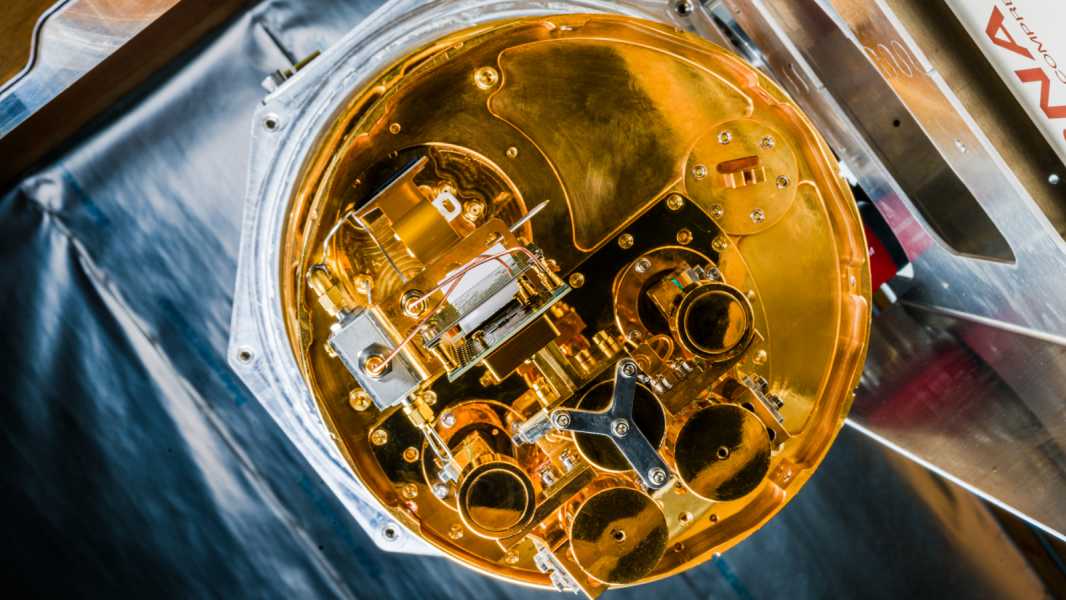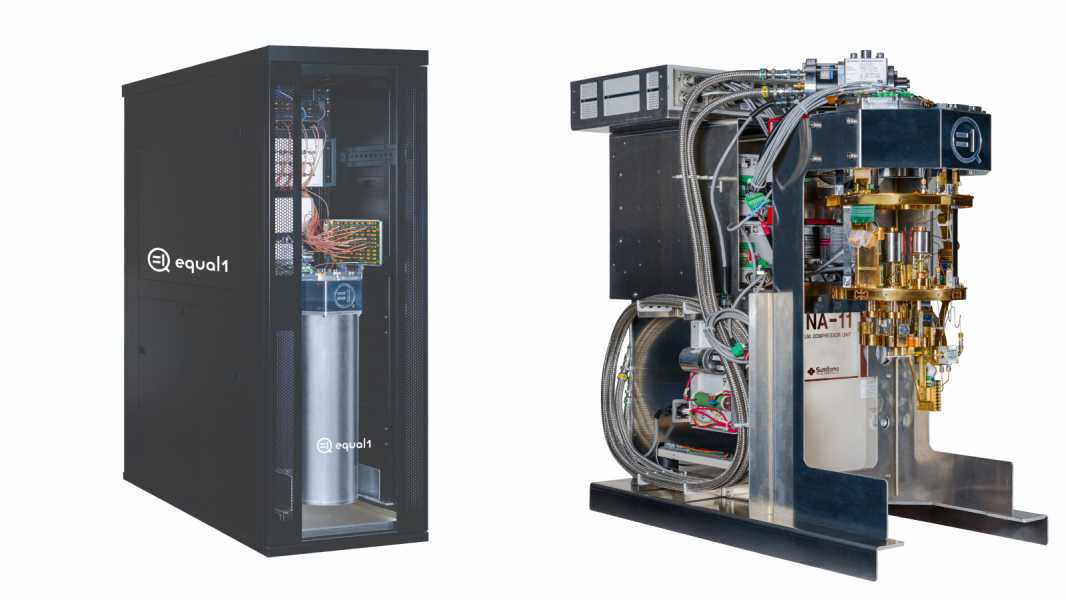
This revolutionary quantum computer uses silicon-based spin qubits, as opposed to the superconducting or trapped-ion qubits used in most other systems. (Image credit: Fergal Phillips)
The startup has unveiled the world's first quantum device that combines the power of quantum computing with the convenience and integration of traditional high-performance computing (HPC).
On March 16, Equal1 demonstrated Bell-1, a new six-qubit machine that can easily fit into existing high-performance computing environments such as data centers, according to a company statement.
The device weighs just over 440 pounds (200 kilograms) and is rack-mountable, allowing it to fit on a physical rack in a data center, and is similar in size to today's graphics processing unit (GPU) servers.
Unlike most quantum computers, Bell-1 does not require specialized infrastructure for installation and additional equipment for cooling to temperatures close to absolute zero.
This is possible thanks to its own closed-loop, self-contained cryocooler, which allows the system to operate at an incredible temperature of 0.3 Kelvin, or minus 459.13 degrees Fahrenheit (minus 272.85 degrees Celsius).
The device uses modern semiconductor manufacturing technologies and purified silicon, which provides a high level of control and long coherence time (the ability of a qubit to be in several states at the same time, which is critical for quantum algorithms and computing).
Rackmount Quantum Computing
Bell-1 qubits are built on silicon, making them smaller than traditional qubits, and the chip at the heart of the device includes quantum processing units (QPUs) with Arm CPUs — renowned for their compactness and efficiency — and neural processing units (NPUs) — specialized processors for accelerating machine learning and artificial intelligence (AI).
Integrating all of these components into a single chip eliminates the need for complex orchestration that would be required between classical and quantum computing elements. All it needs to operate is a standard electrical outlet, and if you have rack space, just plug it in and it’s ready to go, Equal1 said.

The company’s chip, called the UnityQ 6-Qubit Quantum Processing System, uses spin qubits, which sets it apart from many other quantum computing platforms that rely on either trapped ions or superconducting qubits. Silicon-based spin qubits are compact, which could lead to potentially higher qubit densities and allow the use of existing semiconductor manufacturing methods, allowing for greater scalability.
The chip in the Bell-1 also includes error correction, control and readout functions, taking advantage of existing semiconductor infrastructure to ensure reliability and scalability.
Sourse: www.livescience.com





